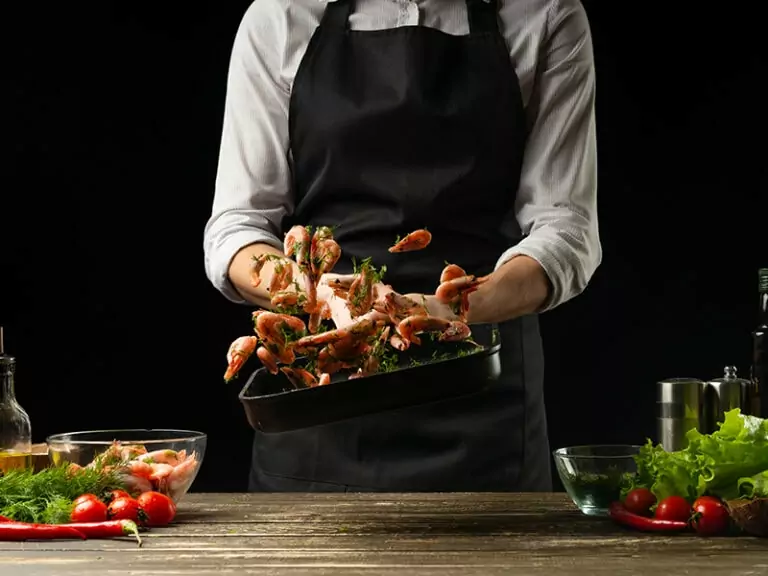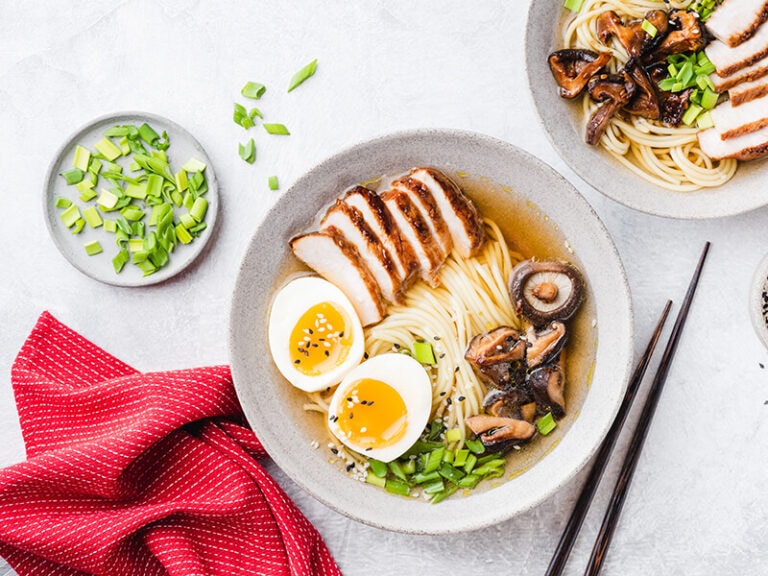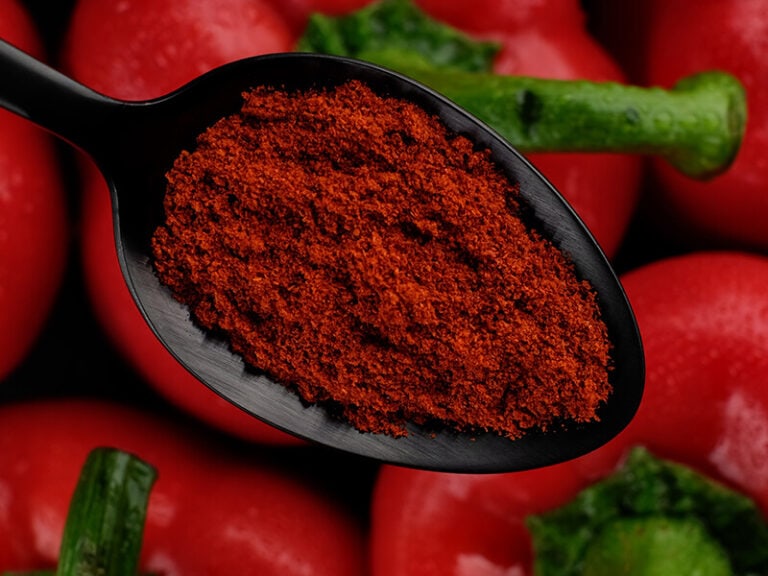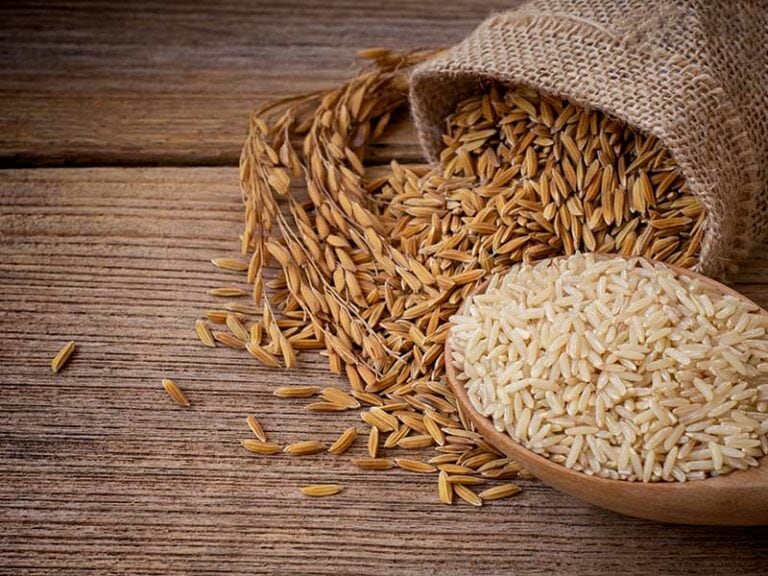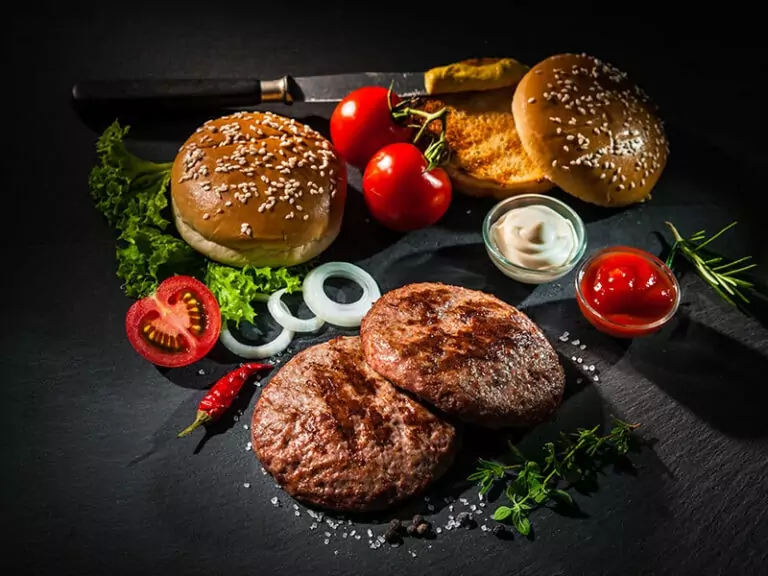Lard vs. shortening – deciding between these two is always a headache. They are so much alike, similar in appearance to their behaviors in cooking. When the first shots were exchanged, lard seemed to be a lost cause, but things have changed.
Are you curious about which one is more publicly favored currently? Or which ingredient is better for your health? Follow along, and I will walk you over detailed comparisons between lard and shortening, as well as solve all your uncertainties about these two popular fats.
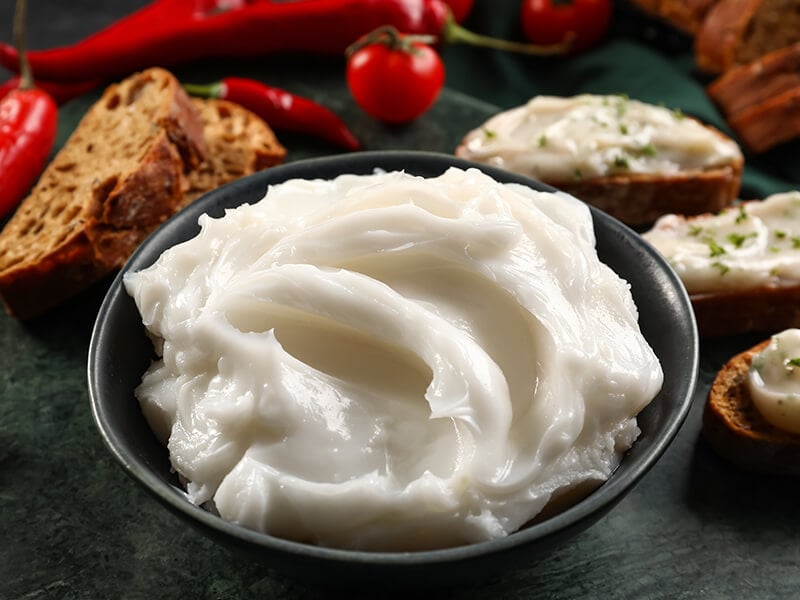
Lard – What Do You Know About It?
By definition, lard is the fat rendered from pork fat. It used to be the number 1 fat of choice in every American kitchen. However, due to some misunderstandings, many cooks shunned away this baby. Do you want to know the reasons behind this boycott? Read on to find out.
Back When Lard Was Famous
In the early 20th century, lard was villainized due to its assumedly close relation to heart disease. As a result, it became a rarity in the market. However, lard has been back in the game, as many reports have shown no prevalence between lard and cardiovascular issues (1).
For centuries, lard has been a darling in different cuisines. It works wonderfully with other elements from the west to the east. By the look, it’s a semi-solid white fat that originates from the fatty parts of a pig. The fattiest portions, like shoulders or belly, will render the most fat.
Typically speaking, there are two main types of lard: rendered and hydrogenated. Both of them hit all the right notes when it comes to making both savory and sweet foods. Still, freshly-rendered lard is always a healthier option.
This fun review of lard will give you a better insight into the ingredient. Check it out now!
A Quick Glance At Lard Production
Standard lard will go through a process including rendering, filtering, and chilling, which are simple enough to make homemade replicas. However, some commercial products will be treated with hydrogenation, with the addition of hydrogens to make the lard shelf table.
Simply put, lard is made by rendering the fat out of the meat. Accordingly, the solid pork fat will undergo boiling, dry heating, or steaming to become a liquid stage. The ideal temperature range for this stage varies from 93°F to 113°F.
After the fat liquefies, it will go through the filtering phase to remove impurities and sediments. Once the liquid cools off, the fat will start to solidify.
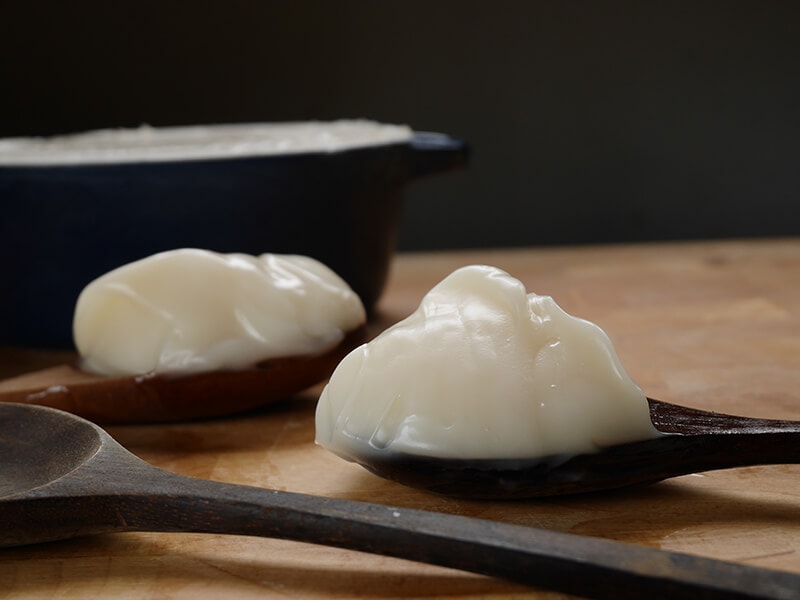
Untold Story Of Shortenings
It’s time to give the spotlight to shortening. Have you ever heard about vegetable shortenings or Crisco before? They may sound like a vague concept for non-American readers, so here is a sneak peek of this famous cooking fat for those who haven’t known.
What Is Shortening?
In the culinary sense, this word also indicates solid fats. Yet, in modern cooking, it has become a term to describe Crisco and other hydrogenated vegetable fats.
In practice, animal fat and vegetable oil can be the source of shortening. Still, plant-based shortenings are more common these days, like the ones made from soybeans, cottonseed, or palm oils.
The arrival of vegetable shortenings, or more precisely Crisco, in 1911 changed the market forever. It was marketed as a healthier and cheaper choice than lard, its main rival back then.
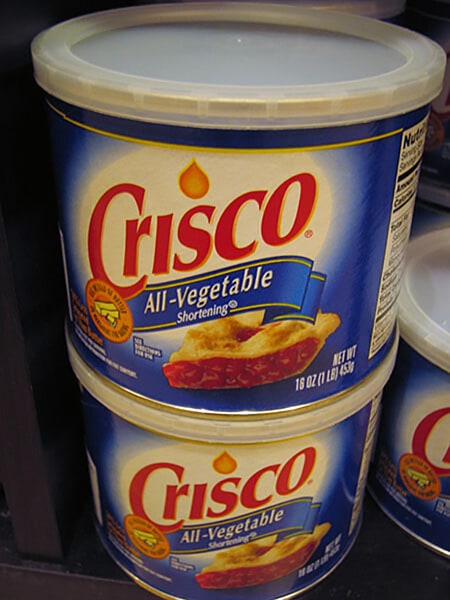
Crisco is a famous American brand specializing in vegetable shortening.
Wonder How Shortening Is Made? Here’s The Process
The primary process of shortening is hydrogenation. More specifically, it’s about adding hydrogen atoms to the oil and transforming it from liquid form into a solid stage. Does it sound similar? Yes, it’s the same process as processed lard.
The inclusion of hydrogen changes the fat’s chemical makeup from unsaturated to saturated fatty acids (2). In other words, when shortening becomes saturated fats, it will be solid at room temperature.
The point of the hydrogenation is to provide a degree of firmness to shortenings. This way, when finished, you will end up with solid and semi-solid fats with a spreadable consistency.
This complex process requires unique gadgets to make the magic work, such as pressure, hydrogen gas, and more. Therefore, this process is nearly impossible to replicate at home. It may be wise to just settle with store-bought products.
How hydrogenation works: Unveil the science behind turning liquid fat into solid fat here.
Lard Vs. Shortening – Similarities And Differences
The basic information about lard and shortening is enough for the warm-up. Let’s get straight to the business and go into detail about the significant characteristics of these two popular fats.
Origin
The biggest and most obvious difference between the two is their origin. Lard is from pig fat, and any fatty part of this animal is good to use. Therefore, making it at home is easy; anyone can do it by rendering fat pork cuts like belly, butt, or shoulder.
In contrast, shortening is a by-product of hydrogenating vegetable oil, which can only happen in manufacturers with special equipment. Vegetable oils like soybean, cotton seed, or avocado can be shortening sources.
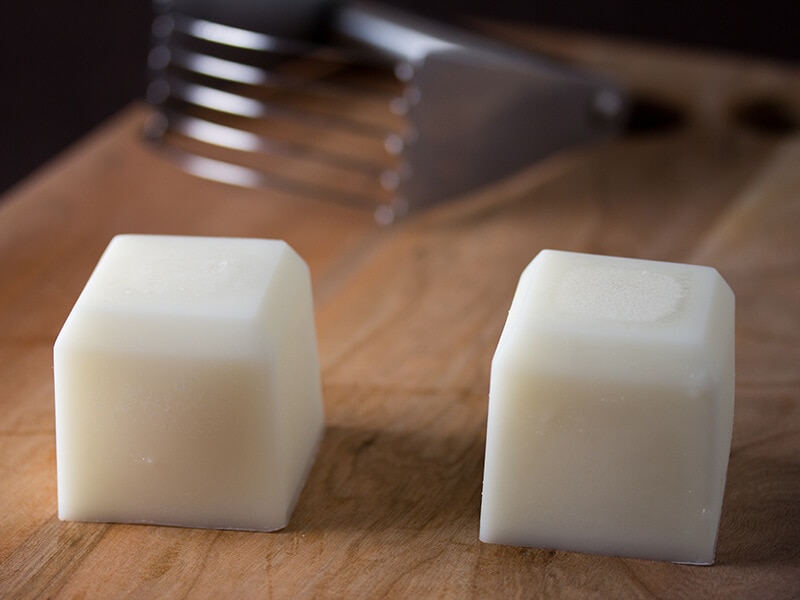
Shortening mostly refers to hydrogenated vegetable fat in the modern kitchen.
Appearance
In appearance, these two are like twins with creamy white color and butter-like consistency. They are non-fluid and non-pourable solid fats at room temperature. To be more specific, both lard and shortenings are shelf-table and have a spreadable texture.
Flavor
Overall, most lard and shortening have a neutral taste and can be flavorless. Their subtle differences become more pronounced in baking. With animal-based roots, lard offers a richer and stronger taste. Some products can carry a mildly lingering pork taste.
Meanwhile, the shortening application won’t make any changes in flavors to baked products but will enhance their greasiness instead. This characteristic comes in handy with specific recipes where intense fat flavors should be avoidable.
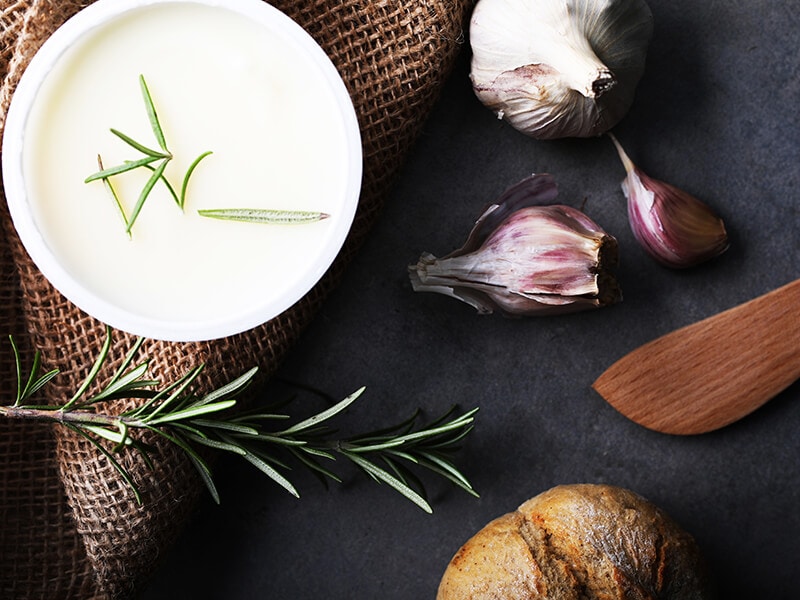
Smoking Points
A quick breakdown: the smoke point is the point where cooking fats stop glistening and begin to produce continuous smoke. Ideally, the oil you use should have a higher smoke point than your cooking temperature.
Understandably, the higher the smoking point is, the better. Therefore, lard is a winner in this row with a smoke point of 370º F, higher than the 360°F mark of shortening.
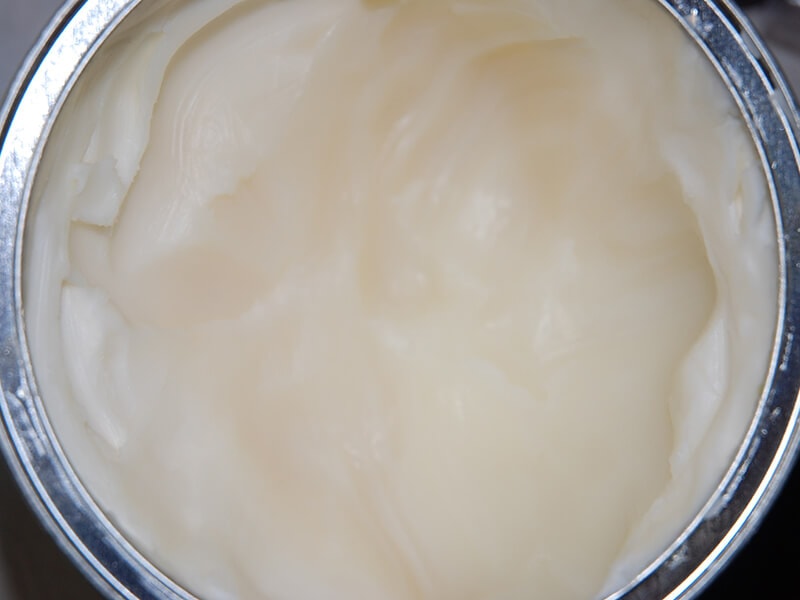
Vegetable shortening has a lower smoke point than lard, but it’s not a big gap.
Melting Points
In short, the melting point refers to the temperature at which a solid turns into a liquid. In baking, oils with higher melting points are preferable since they will give the eggs and flour extra time to become firm before the given fats melt.
As lard is taken from different parts of pigs, its melting point also varies based on the location of pork fat. Generally speaking, lard has a melting point that ranges from 86°F – 118°F. Meanwhile, hydrogenated shortening melts around 117°F – 119°F.
Gluten-Free Credentials
If you ask me whether lard and shortening are gluten-free, it’s a yes for both of them. As they are 100% fat, no extra water or gluten elements are involved. Therefore, patients with celiac or other gluten-related disorders can freely apply these fats to their diets.
Usages
From a culinary standpoint, the possibilities of shortening and lard are endless since they can be present in any cooking task. However, there are more surprises about their usage that you’ll never think of. Tag along and figure out what they are.
Lard
For centuries, lard has played a vital role in cooking and baking recipes. Since it smokes so little when the temperature hits high points, lard is perfect for bringing a crispy, golden outer in deep frying. Moreover, it also adds a richer flavor to your sauteing or grilling recipes.
In addition, lard is an excellent alternative to any recipe that calls for butter. Baking, pastries, or even masa (a dough similar to tortillas) for tamales (Spanish corn cakes) – you name it. Noticeably, the beautiful flakiness that lard brings to baked goods is what pastry chefs seek.
Most surprisingly, lard has other roles outside the kitchen door. Strangely enough, this fat works wonderfully in your beauty regime as a moisturizer, lip balm, or even body lotion. The vitamin D content in lard will help fade dark spots and eliminate acne lines.
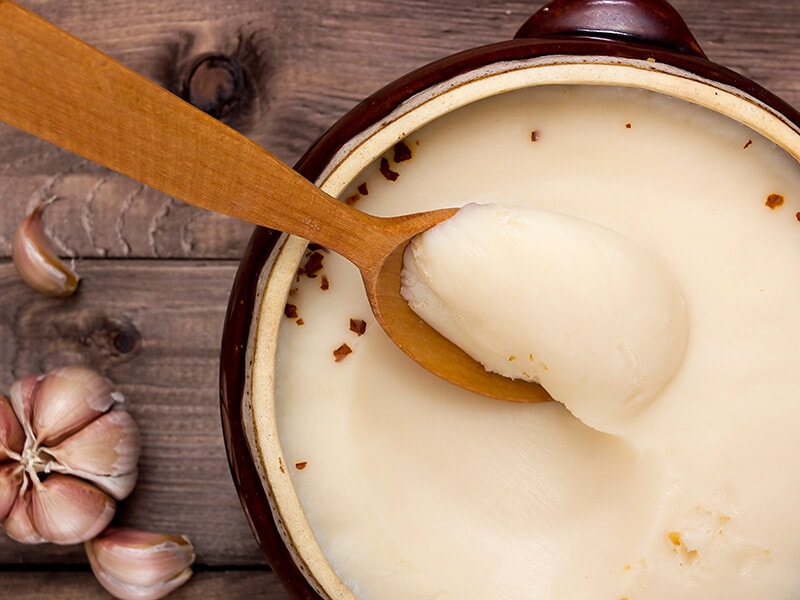
Shortening
The most noticeable feature of shortening is that it has no flavor. Therefore, this item can perform in multiple recipes without outshining other ingredients. Also, with its high smoke point, shortening is ideal for withstanding high-heated cooking like grilling, baking, or sauteing.
It’s also a preferred fat for frying because shortening reduces the chances of oil sputtering under high cooking temperatures. Baking-wise, thanks to its spreadable nature, this fat can easily mix and melt into the dough, enabling the softest results you will ever try.
Do you have trouble measuring shortening in cooking? This simple guide will help you.
Fat Content
Though shortening has been popular for decades, they are not as good as you thought. Researchers have shown vegetable oils like Crisco are full of artificial trans fats. Large doses of this substance will lead to varying cholesterol levels and a hazard for heart disease.
Lard, on the other hand, is safe from trans-fat. In return, its amount of saturated fat is higher than shortening. The good news is that most of its fat content is monounsaturated fat, which is beneficial for your body in moderate consumption.
It’s worth mentioning that processed lard is also available on the market. Technically, this type is overflowing with hydrogens and trans fats, so check the label carefully before purchasing.
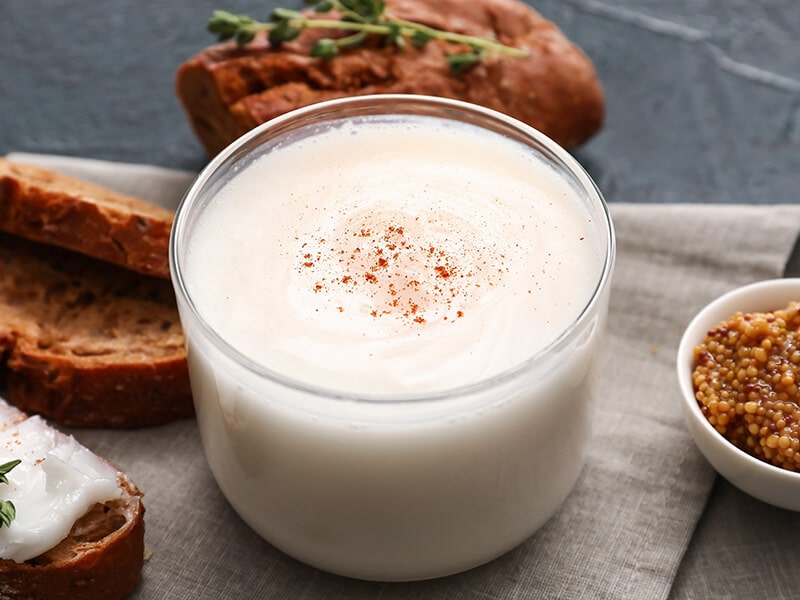
Price
Shortening is unbeatable when it comes to prices. It’s much cheaper than the animal-based fat in the local market. Apart from the taste, the low-priced bill is why most die-hard bakeries and home cooks vote for shortening.
Accessibility
Lard is harder to find between the two since it may be unavailable at many supermarkets and stores. The ideal place to grab a freshly-rendered jar is a butcher shop, but that’s a different story. Depending on your locality, the meat shops might be nearby or far away from your house.
Meanwhile, shortening like Crisco is highly accessible since it’s present at any store or market. You can always find this item in the oils and fats section in the baking aisle.
If you still have a vague concept of Crisco, don’t miss this chance to get a closer cut of this famous vegetable shortening.
Acceptance
Lard is the fat of choice in many cuisines, from South America and Europe to Asia. It seems that there are no boundaries for its usage, but that’s plain wrong. Due to its pork base, these drippings are on the ban list of veganism, vegetarianism, and Muslim culinary culture.
In Western cuisines, convenient shortening is still more popular since people still think it is the healthier option. In addition, vegetable shortening is plant-based, so it’s more flexible in many cuisines and diets.
Lard Vs. Shortening – Which Is The Better Choice For You?
Each person will have their fat of choice based on personal preferences. It’s hard to say which is better since these two have different advantages and shortages. But if you haven’t made up your mind, maybe reading this section will help.
What To Choose Between Lard And Shortening
Since these two work similarly in savory applications, I will focus more on the baking side, where their characteristics shine most clearly. When it comes to baking, it’s safe to assume that lard and shortenings aim at different targets.
Some chefs prefer lard to prepare pastries because the fat brings refreshing fluffiness and extra flakiness to the dough. On the contrary, opt for shortening if you need greasiness and tenderness for your baked goods.
In fairness to shortening, there are reasons its introduction in the 1910s was such a huge hit and a big threat to lard. At a lower price, shortening can bring similar results as lard in many cooking tasks. And this is still true now.
Price aside, their health benefits are also worth considering. While plant-based fat contains zero nutrients, animal-extracted oil is a package full of vitamin D and minerals. Most notably, rather than saturated fats, trans-fat in shortening is the most dangerous fat of all.
So what is the bottom line? If you are health conscious, stick with the rendered pork. Little-processed food always trumps processed ones. In contrast, shortening is ideal for those more attentive to the price and moistness of baked goods.
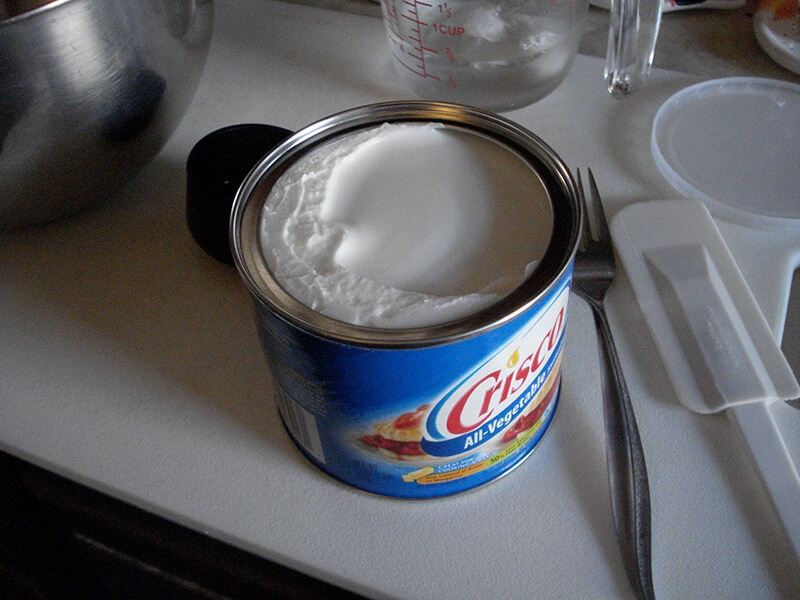
Vegetable shortening is similar to lard in both appearances since they’re white and have a smooth texture.
Interchange Lard And Shortening – Why Not?
Lard and shortening share many similarities, including fat amount, smoke points, and melting points. Needless to say, both cook up similarly, so feel free to substitute one for another with the same amount. Follow the ratio 1:1, and you are good to go.
However, both feature a considerable amount of calories and cholesterol. Therefore, regardless of your choice, remember that large concentrations of lard or shortening do no good to your body.
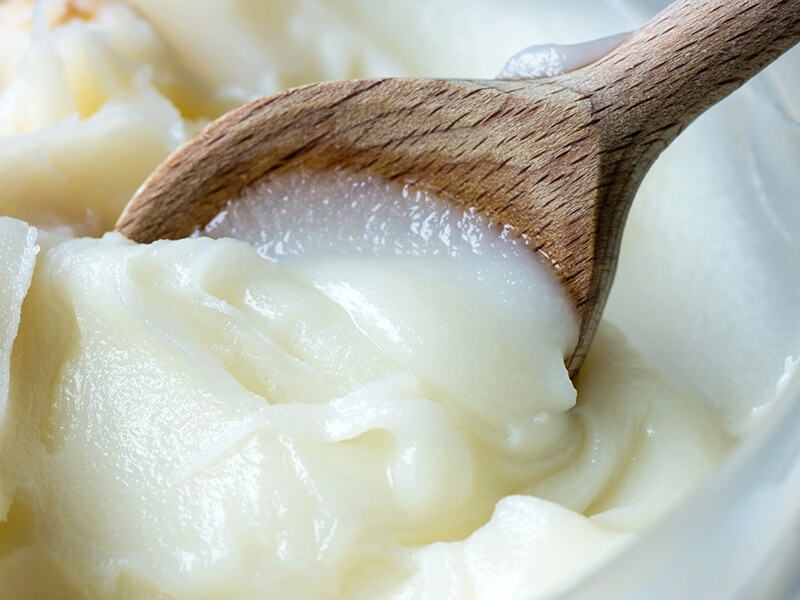
One Or Two Things About Lard And Shortening Storage
Since they are fats, both can go rancid if exposed to the air. Therefore, the key to storing fats is keeping them in a closed container, even in safe environments such as a fridge or freezer. Pork fat is a favorite diet for rodents and insects, so make sure you seal the lid tight.
Let’s Learn How To Store Lard!
For a good rule of thumb, low temperature is a better condition to preserve the freshness of any product, and lard is no exception. Refrigerating this oil will expand its lifespan by up to one year. However, the freezer is the true keeper, as frozen lard can last for around two years.
This method will need some extra effort, but your lard can stay fresh in the longer run. For freezing options, minimizing air exposure is the key. Therefore, you’d better cover the lard in wax paper and then wrap it in plastic wraps or foil before transferring them into the freezer.
If you use lard daily, I recommend leaving it in the pantry. As such, lard won’t face constant temperature changes when removed in and out of the fridge. Place the jar in a cool and dry place at room temperature. Stored this way, it’s still good to use within six months.
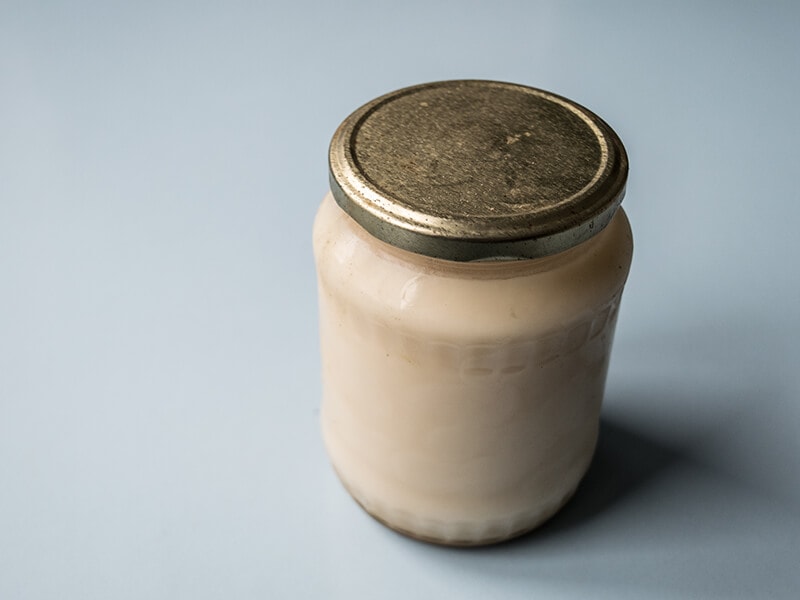
Easy Guideline To Preserve Shortening
Vegetable shortening, such as Crisco, comes in full package, so the storage process is also easier. You don’t need an extra container because its original packaging is good enough.
Technically, storing shortening at room temperature is all you need. It may be wise to keep the fat in an air-ventilated and dark place. Doing so helps unopened shortening last for eight months, and the opened one can stay good for three months (3).
Your fat may go rancid faster in hot and humid areas, so refrigerators and freezers are safer bets. Refrigerated shortening can also last for an extra few months to two years. Just remember to return it to room temperature before using it, and everything will be fine.
Much like lard, shortening must go through extra covers by wax paper and foil to be in the freezer. As long as it’s well-wrapped and protected, the unsealed frozen fat will be in good use for two years, while you can use the opened one within one year.

Making Homemade Lard? Easy Peasy!
As I said already, shortening is impossible to remake because of its complexity. But nothing can stop you from making a fresh batch of rendered-pork grease at home. It’s cheaper, and the best part is that you don’t have to worry about the additives or hydrogens as the store-bought.
Ingredients
Making lard is simple, with a handful of ingredients and equipment. Apart from the fats, everything else is already around your kitchen. Make sure that you have got all the items below:
- Pig fat
- Water
- A heavy-bottomed pot
- A cheesecloth
- Container(s)
There are good reasons why I said homemade lard is more economical. You only have to spare money for a good cut of pork fat. To get the best cuts, go straight to the meat shop and ask for recommendations from the butchers.
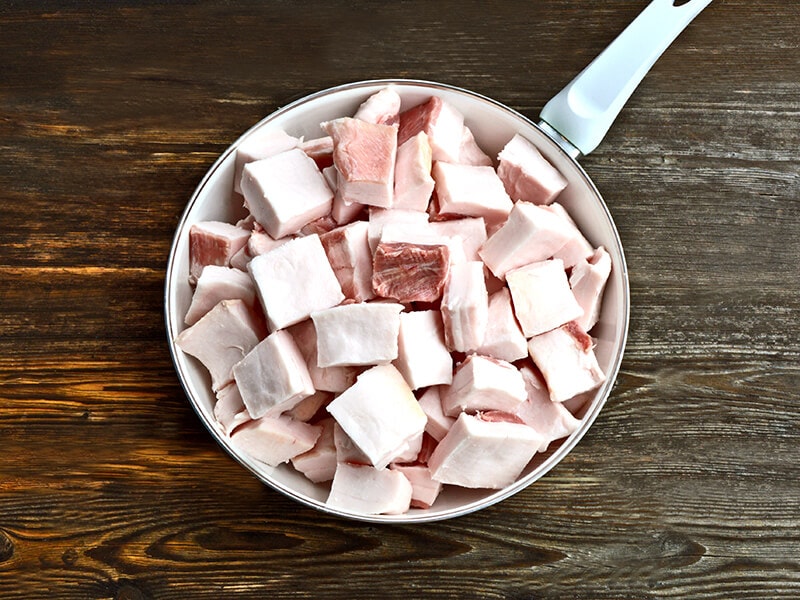
Simple Instructions To Render The White Fat
Before going into the details, remember that patience is a virtue when rendering fat. Since the higher heat causes the fat to burn quickly, the whole making process will require low heat. Be prepared: the cooking time might be extensive.
Step 1: Cut And Mix The Ingredients
To bring the best results, chop the fat into smaller chunks and ensure all these pieces are the same size. This step will be easier if you use frozen fat. Next, put the chopped fat and a few spoons of water into the bottom of your pot.
Step 2: Let It Melt
Turn the pot on low and give the mixture a good stir once in a while to prevent sticking. After 20 minutes, the fat will start to separate from the pork, and bubbles will appear on the surface.
Continue stirring and let it cook for another 40 – 45 minutes before removing the lard from the heat source.
Step 3: Clear Out The Impurities
Scoop the remaining bits of cracklings (leftover chunks) and other impurities with your spoon and use a few layers of cheesecloth to strain the fat. Fill the liquid into a jar and set it aside to cool. Once the jar totally cools off, store it in the fridge to let the fat harden up.
This engaging tutorial on rendering lard will help you get a successful batch.
FAQs
I hope this article has covered most of the information that you need. However, if you’re still interested in more facts about lard and shortening, check out the extra questions below.
What Is Your Pick – Lard Or Shortening?
Lard and shortening have been rivals for a long time, but that doesn’t mean you must stick with one option for the rest of your life. As mentioned above, you’re free to use them interchangeably in every cooking project.
If you have given the homemade lard a try and succeeded, please give me feedback in the comment section. I can’t wait to read your reviews. Also, please share my post on social media to reach more cooking fat lovers. Thank you in advance! Goodbye!
References
- Hinde, N. (2017) Saturated Fats ‘do not clog arteries and cause heart disease’, cardiologists claim, HuffPost UK. HuffPost UK.
- (no date) Hydrogenation.
- (no date) ASKUSDA.

